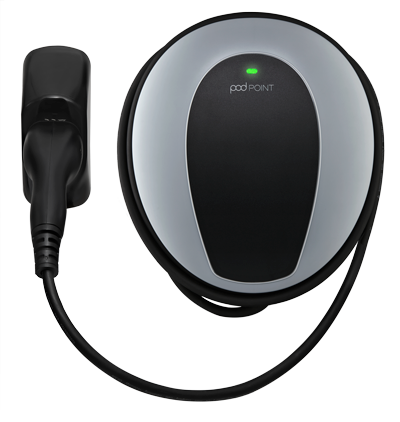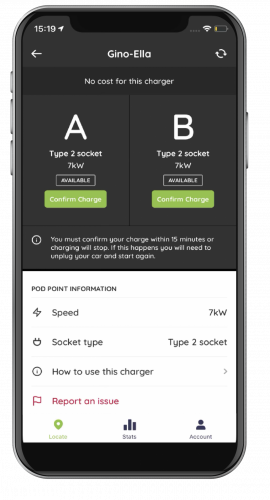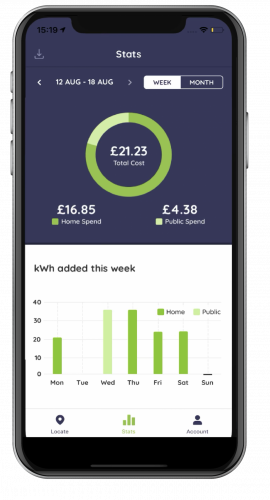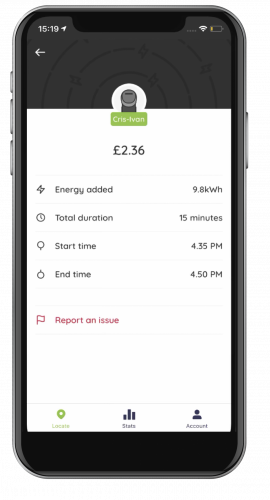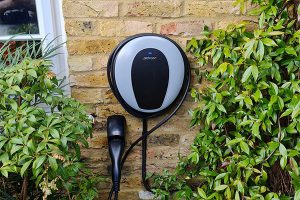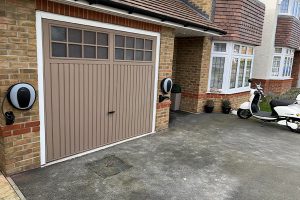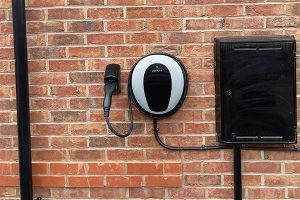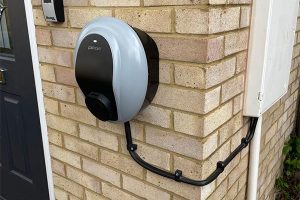
POD POINT SOLO 3
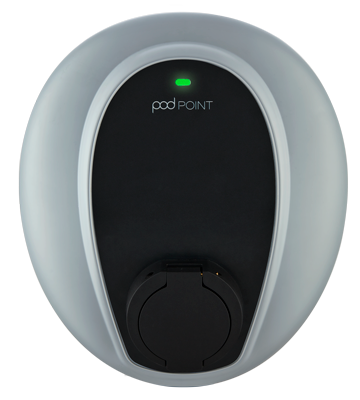
-
Power output - 7kW
-
Type - Socketed & Tethered
-
Charge scheduling - Yes
-
Solar compatible - No
-
Load balancing - Yes
-
Usage reporting - Yes
-
PEN Fault detection - Yes
-
Warranty - 3 Years
Easee One review
he Pod Point Solo 3 is instantly recognisable with its grey and black oval body, a sleek improvement over the previous Solo’s round shape.
It promises to do the basics right and gets off to a good start with the option of a tethered or untethered body, in-built earthing, and a recessed case back that lets you loop the cable around the unit for a smart, clean appearance.
Features
The Solo 3’s oval shape is unique in the charger world with a lovely black and grey colour scheme. It looks fantastic with the matte polycarbonate case providing space to wrap the cable around, thanks to the thickness of the unit.
Tethered and untethered models have different dimensions - 290 x 330 x 167 mm untethered, 360 x 360 x 150 mm tethered – with the socket on untethered units angled downwards, so the charger head doesn’t stick out.
Tethered models have a black wall holster to securely lock the charger head into place so that it doesn’t dangle off the charger. The cable length is 7.5m for type 2 and 4.8m for type 1, while untethered models don’t come with a cable.
The build quality is excellent, with the Solo 3’s polycarbonate case replacing the ABS case on the previous Solo for greater impact resistance.
- Dimensions (mm): 330 x 290 x 167 mm untethered, 360 x 360 x 150 mm tethered (H x W x D)
- Charging power: 2.5–7kW (6A - 32A), 11kW and 22kW (three-phase)
- Earthing: Built-in
- Connectivity: Wi-Fi
- Control: App
- Cable length: 7.5m (type 2), 4.8m (type 1)
- Socket type: Tethered or untethered
- Unique features: Spend tracking in-app, auto load balancing.
The Solo 3 charges up to 7kW on a 32A single-phase supply and up to 3.6kW on a 16A single-phase supply. It’s also available as a three-phase model, supporting charge speeds from 11kW (domestic) to 22kW (commercial).
At 7kW, the Solo 3 adds around 28 miles of range per hour - sufficient to charge most EV batteries from 10% to 100% in less than seven hours.
The Solo 3 connects to your home Wi-Fi
Thanks to in-built earthing, the Solo 3 doesn’t need an earth rod and only requires Type A RCD/RCBOs. It has cable entry holes at the rear, left, right and bottom.
The circuitry is preconfigured, so only the terminals and DIP switches need to be set up.
The Solo 3 won’t cause energy disruption in the rest of your home, thanks to automatic power balancing. It adjusts the charge rate from the charger with a CT clamp, so the charger doesn’t consume more power than it should.

The Pod Point app is easy to use, with all essential features like scheduling and statistics just a few taps away. There are four options from the app (Locate, At Home, Stats, Account), and you will use At Home and Stats the most.
‘At Home’ is where you set schedules. You can select from days of the week and create a time slot, so your Solo 3 is activated and ready to go.
‘Statistics’ provides a breakdown of charging sessions, including:
- Spend
- kWh added this week
- Total kWh added
- kWh added per day
- Individual stats per session
Spend is calculated based on the kWh rate/price you input in pounds. The charger then calculates total spending by multiplying the kWh rate against consumption. It works well, providing handy insights into charging costs.
Importantly, you can add tariff prices for different time slots, so the app provides accurate spend data with dual-rate energy tariffs.
In addition to managing your Solo 3, you can also track public Pod Point chargers in the app, calculating spend and kWh consumption data across all chargers.
The Solo 3 has an LED status light on the front of the case, showing eight possible light combinations. These are as follows:
- Solid green – vehicle charging
- Flashing green – charge complete/ waiting to charge
- Solid blue – standby
- Flashing blue – charger syncing
- Solid white – check Wi-Fi connection
- Solid yellow – charging paused/halted
- Flashing yellow – schedule ready
- Red – fault
